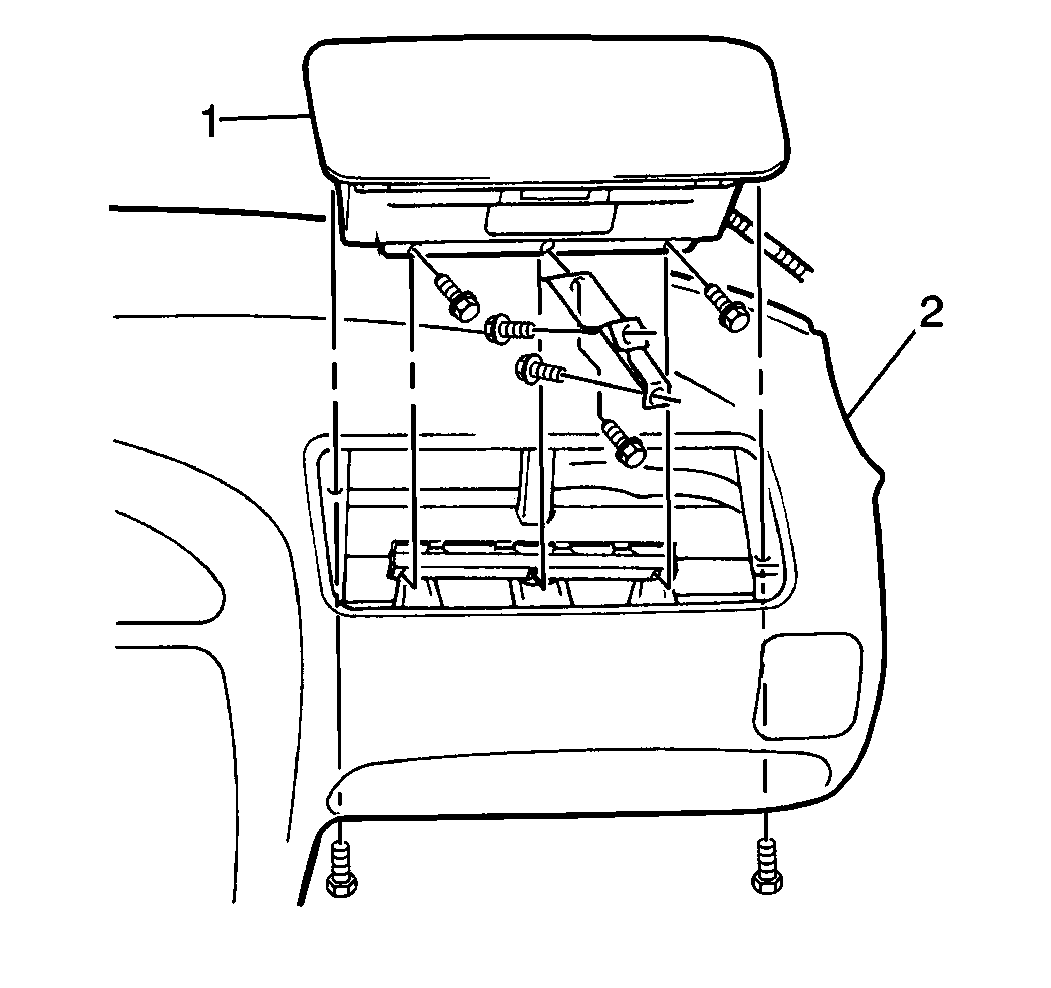Live, Undeployed Inflator Module
Refer to Inflator Module Handling and Scrapping .
Deployed Inflator Module
After the inflatable restraint steering wheel module has deployed, the surface of the air bag may contain a powdery residue. This powder consists primarily of cornstarch (which is used to lubricate the bag as it inflates), and by-products of the chemical reaction. The deployment reaction produces sodium hydroxide dust, similar to lye soap. The sodium hydroxide quickly reacts with the atmospheric moisture, creating sodium carbonate and sodium bicarbonate. Therefore, you will probably find no sodium hydroxide present after the deployment. As a precaution you should wear gloves and safety glasses, which help to prevent possible irritation of the skin or the eyes.
Removal Procedure
- Disable the SIR system. Refer to Disabling the SIR System .
- Remove the I/P compartment. Refer to Instrument Panel Compartment Replacement in Instrument Panel, Gages and Console.
- Remove the fasteners from the inflatable restraint I/P module (1).
- Remove the inflatable restraint I/P module from the vehicle's instrument panel (2).
- Fully deploy the module before disposal. If the module was replaced under warranty, fully deploy and dispose of the module after the required retention period. Refer to Inflator Module Handling and Scrapping .

Installation Procedure
- Install the inflatable restraint I/P module (1) into the vehicle.
- Install the inflatable restraint I/P module fasteners.
- Install the I/P compartment. Refer to Instrument Panel Compartment Replacement in Instrument Panel, Gages and Console.
- Enable the SIR System. Refer to Enabling the SIR System .

Caution: When you are carrying an undeployed inflator module:
• Do not carry the inflator module by the wires or connector on
the inflator module • Make sure the bag opening points away from you
Notice: Use the correct fastener in the correct location. Replacement fasteners must be the correct part number for that application. Fasteners requiring replacement or fasteners requiring the use of thread locking compound or sealant are identified in the service procedure. Do not use paints, lubricants, or corrosion inhibitors on fasteners or fastener joint surfaces unless specified. These coatings affect fastener torque and joint clamping force and may damage the fastener. Use the correct tightening sequence and specifications when installing fasteners in order to avoid damage to parts and systems.
Tighten
| • | Tighten the 4 bottom center bolts to 23 N·m (16.5 lb ft). |
| • | Tighten the 2 upper side screws to 5.5 N·m (4 lb ft). |
